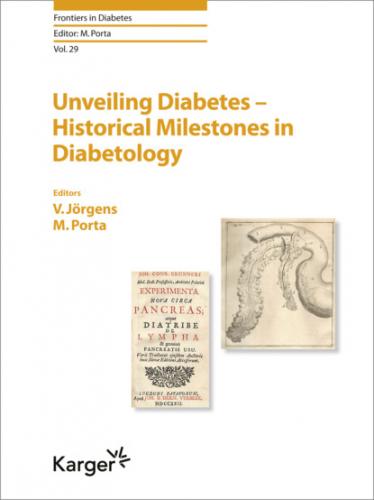Conclusions
For a brief period, from 1915 until the discovery of insulin in 1922, prolonged fasting and permanent calorie restriction were championed in North America by Frederick Allen and Elliott Joslin. Offering hope for child diabetics and their parents, and for severely afflicted adults, the Allen Plan was quickly and widely adopted. This episode shows us the frail basis upon which new and extreme treatments could become common practice.
Allen developed his therapeutic ideas in 1913 at Rockefeller Hospital, saying they were based on his experiments with partially pancreatectomized dogs. He doubtlessly did abundant work on animals at Harvard prior to 1913, but these results, published in detail, have no bearing on calorie restriction therapy. Later animal experiments at Rockefeller do relate to the treatment but are published (in an era before peer review) only sketchily and are impossible to critically evaluate. Not even the number of comparison animals is reported, which may have been as few as two. If Allen did establish a reliable model for calorie-restriction therapy in dogs, he did not at the time support it with detailed results in the public record.
From 1914 to 1917 Allen and coworkers treated about 100 patients in the diabetic ward of Rockefeller Hospital. Allen claimed success in eliminating or avoiding glycosuria and acidosis, mitigating the worst outcomes of diabetes, and reinvigorating his patients – if they adhered strictly to their diets. In his 1919 book, Allen described 76 of these cases in detail, and while recording many deaths, nonetheless saw this record as verifying the efficacy of undernutrition, reliably citing calorie restriction as the reason for successful cases, and lapses from diet as the reason for failures.
Fasting and undernourishment did free the urine of sugar and apparently reduced the incidence of coma-and-death in children. But child diabetics soon died from infections and other causes, now including inanition. It is uncertain whether calorie restriction extended life beyond the weeks or months gained from avoiding a particular coma event. My reanalysis of the Rockefeller series, showing very high mortality among children, provides little reason to think that it did. This judgment is obviously limited by the absence of a proper comparison group [1].
If we accept Allen’s claim that undernourishment worked to some degree, it is worth asking if it worked any better than more filling low-carbohydrate diets. As contemporary critics, Newburgh and Marsh [5] put the issue thus:
A diabetic diet, in order to be satisfactory, must be capable of enabling the patient to lead a moderately active life for an indefinite period... [T]he severe diabetic may be kept sugar free by a sufficient reduction of his total caloric intake, but it is frequently necessary to reduce the total calories so much... that such patients suffer from slow starvation, and are quite incapable of earning a livelihood – indeed many of them may be said to merely exist.
We cannot say whether Elizabeth Hughes would have lived until the advent of insulin if Allen had not nearly starved her to death. But it does appear, more generally, that undernourishment therapy was promoted as a treatment for diabetes without clear supporting evidence from either animal or human studies.
Why, then, did the treatment and its promoter achieve such prominence? Joslin’s support was critical for Allen to carry the day. This may have hung partly on the prior relationship between the men. Joslin did have some observational grounds for his enthusiasm. Prolonged fasting seemed to alleviate coma as the proximate cause of death in his pathetic child patients, even if it barely extended their lives.
Possibly the self-discipline required by the Allen Plan appealed to the puritanical outlook of the two physicians. Allen and Joslin were very hard working, self-disciplined men, physically trim and averse to excess or sloth. Both believed that diabetic patients must take charge of their own wellbeing. Allen often saw deteriorations in health as his patients’ own fault for lapsing from their diets. Joslin proselytized that it was the diabetics’ responsibility to rigorously control their lives. Indeed, their moral ideology may have been as important for their advocacy as evidence-based effects.
The entire episode was brief. The primacy of diet diminished once insulin became available, leading to the primacy of medication [24]. Weight loss apart, there is still today no evidence-based consensus on proper diabetic diets.
References
1Mazur A: Why were “starvation diets” promoted for diabetes in the pre-insulin period? Nutr J 2011;10:23.
2Joslin E: The diabetic. Canadian Med Assn J 1943;8:488–497.
3Joslin E: The Treatment of Diabetes Mellitus, ed 2. Philadelphia, Lea and Febiger, 1917.
4Cox C: The Fight to Survive. New York, Kaplan, 2009.
5Newburgh L, Marsh P: The use of a high fat diet in the treatment of diabetes mellitus. Arch Inl Med 1921;27:699–705.
6Woodyatt R: Objects and methods of diet adjustment in diabetes. Trans Assn Amer Phys 1921;36:269–292.
7Henderson A: Frederick M. Allen, M.D., and the Psychiatric Institute at Morristown, New Jersey, 1920–1938. Acad Med New Jersey Bull 1970;16:40–49.
8Allen F: Studies Concerning Glycosuria and Diabetes. Cambridge, Harvard University Press, 1913.
9Allen F: Studies concerning diabetes. JAMA 1914;63:939–943.
10Cole R: Scientific Reports to the Corporation and the Board of Scientific Directors of the Rockefeller Institute for Medical Research. Volume 3–6. Sleepy Hollow, Rockefeller Foundation Archives, 1914.
11Allen F: The treatment of diabetes. Boston Med Surg J 1915;172:241–247.
12Allen F: Prolonged fasting in diabetes. Am J Med Sci 1915;150:480–485.
13Allen F, Stillman E, Fitz R: Total Dietary Regulation in the Treatment of Diabetes. New York, The Rockefeller Institute for Medical Research, 1919.
14Metzer S: Scope of paper by Kleiner and Meltzer. JAMA 1916;65:895.
15Bliss M: The Discovery of Insulin. Chicago, University of Chicago Press, 2007.
16Joslin E: The Treatment of Diabetes Mellitus. Philadelphia, Lea and Febiger, 1917.
17Feudtner C: Bittersweet: Diabetes, Insulin, and the Transformation of Illness. Chapel Hill, University of North Carolina Press, 2003.
18Joslin
